A History of the Popes
A History of the Popes
From Peter to the Present
John W. OMalley, S.J.
A Sheed & Ward Book
ROWMAN & LITTLEFIELD PUBLISHERS, INC.
Lanham Boulder New York Toronto Plymouth, UK
A Sheed & Ward Book
Published by Rowman & Littlefield Publishers, Inc.
A wholly owned subsidiary of The Rowman & Littlefield Publishing Group, Inc.
4501 Forbes Boulevard, Suite 200, Lanham, Maryland 20706
www.rowmanlittlefield.com
Estover Road, Plymouth PL6 7PY, United Kingdom
Copyright 2010 by Sheed & Ward
All rights reserved. No part of this book may be reproduced in any form or by any electronic or mechanical means, including information storage and retrieval systems, without written permission from the publisher, except by a reviewer who may quote passages in a review.
All Bible quotations are taken from the Revised Standard Version of the Bible, copyright 1980 by the Division of Christian Education of the National Council of the Churches of Christ in the United States of America. Used by permission. All rights reserved.
British Library Cataloguing in Publication Information Available
Library of Congress Cataloging-in-Publication Data
OMalley, John W.
A history of the popes : from Peter to the present / John W. OMalley.
p. cm.
Includes index.
ISBN 978-1-58051-227-5 (cloth : alk. paper) ISBN 978-1-58051-229-9 (electronic)
1. PapacyHistory. I. Title.
BX955.3.O43 2010
282.092 ' 2dc22 2009015746
 The paper used in this publication meets the minimum requirements of American National Standard for Information SciencesPermanence of Paper for Printed Library Materials, ANSI/NISO Z39.48-1992.
The paper used in this publication meets the minimum requirements of American National Standard for Information SciencesPermanence of Paper for Printed Library Materials, ANSI/NISO Z39.48-1992.
Printed in the United States of America
For Jeanne Ruesch
with gratitude and affection
Preface
T his book originated in a series of thirty-six audio-lectures I recorded that were published in 2006 by Now You Know Media. My intention in reworking the lectures for the book has been to provide a history of the papacy that would make clear the basic story line in a way accessible to the general reader. Papal history stretches over a period of two thousand years, which means there are lots of players on a field where lots of complicated games were being played. It is easy to get lost and befuddled. The relationship of the popes to the emperors, for instance, was so volatile and shifting over such a long stretch of time that sometimes it is hard even for professional historians to keep track of what was going on at any given point.
I have tried, therefore, to tell the story in as straightforward a way as possible, which means I have had to pass over much that I would have liked to include. My hope is that the leaner narrative will provide a recognizable path through complicated terrain and ensure readers can keep their bearings. I have, however, spiced the narrative with details that enliven it and at the same time illuminate the bigger issues. My further hope is that the book will spark interest in this fascinating institution and lead readers to pick up other works that treat aspects of it at greater length.
In that regard I recommend the Bibliographical Essay that concludes Eamon Duffys admirable Saints and Sinners: A History of the Popes (third edition, Yale, 2006), a book similar to mine but more ample by far. For detailed bibliographies on the popes and every aspect of the institution (including such items as popes animals and barbers), I recommend the three volumes for which I was the English language editor, Philippe Levillains, The Papacy: An Encyclopedia (Routledge, 2002). To learn about individual popes a handy guide is still J. N. D. Kellys The Oxford Dictionary of the Popes (Oxford, 1986). For more general background the volumes in The Penguin History of the Church, beginning with Henry Chadwicks The Early Church (revised edition, Penguin, 1993), are by first-rate scholars and of reasonable length. Even modest libraries will have all these works on their shelves.
Several people have made the production of this book possible, and to them I want to express my gratitude. Ross Miller, formerly senior editor at Rowman & Littlefield Publishers invited me to write the book, encouraged me through the process, and provided me with transcripts of my lectures for Now You Know Media. Sarah Stanton, who took over after Ross Miller, and Krista Sprecher, guided me through the final stages of publication. By reviewing my text with sharp eyes, James P. M. Walsh and Sara Singho saved me from many errors. Michael T. Bloom, chief executive officer of Now You Know Media invited me to undertake the lectures and kept up a gentle pressure until I finally agreed to do so. He then graciously granted permission for use of them by Rowman & Littlefield in producing this book. Although the text I ended up producing differs considerably from the original lectures, the basic outline and development of argument remain the same.
Introduction
T his book is about the oldest living institution in the Western world, an institution that began some two thousand years ago but that is as vital today as perhaps ever in its history. The papacy, which traces its origins to Saint Peter, Jesuss chief disciple, is embodied today in Pope Benedict XVI. In between Peter and Benedict there have been some 265 individuals who claimed to be Peters successors and whose claim is today generally recognized as legitimate. Some were saints; some were sinners. Pope Leo the Great and Pope Gregory the Great were men of heroic stature, but Pope John XII, who became pope at the age of eighteen, led such a debauched life that he was a scandal even in the debauched Roman society of the tenth century. There were, besides, many other individuals who claimed to be pope, but whose claims contemporaries or posterity rejected as invalid, the anti-popes. They figure heavily in some parts of our story.
The popes differed among themselves in social class. Pope Callistus I was a former slave, and Pope Pius IX a noble. Pope Pius XII was from the Roman aristocracy, but his successor, Pope John XXIII, came from peasant stock. Popes have been Greek, Syrian, African, Spanish, French, German, Dutch, and of course Italian. There has been only one English pope, Hadrian IV, and only one Polish, John Paul II. None has been Portuguese, Irish, Scandinavian, Slovak, Slovenian, Bohemian, Hungarianor American. A fair number were not priests when they were elected. Pope Leo X, for instance, was a deacon, and Benedict VIII, Benedict IX, as well as others, were laymen. Popes were not always elected in Rome. As late as 1800 Pope Pius VII was elected in Venice.
If you are at all interested in either religion or history, you have to be interested in the papacy. Within our own lifetimes, popes have been front-page news. Pope John Paul II is sometimes spoken of as the Man of the Century. The popes were players in virtually all the great dramas of the Western world in the last two thousand years, and in those dramas they were often major protagonists. The history of the popes is not a history told in a sacristy.
In this book I tell the popes story as a historian, not as a theologian, but by the very nature of the subject theology must at times enter it. Indeed, the whole edifice of the papacy is built upon a theological interpretation of what we may take as historical fact: Peters preeminence among the Twelve, Jesuss closest disciples, and his subsequent ministry and death in Rome. Peter was thus the first bishop of Rome and therefore the first pope. All the popes since then claim to be his successors and to have inherited his leadership role. I tell their story neither to justify nor challenge that theological claim, and I tell it neither to defend nor to condemn the popes and their actions. I tell it to make clear what happened and how the institution got to be the way it is.
Next page
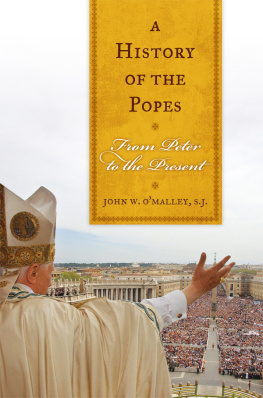
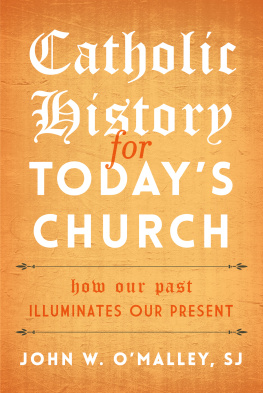

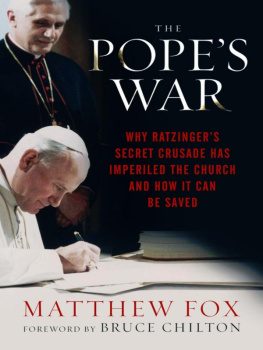
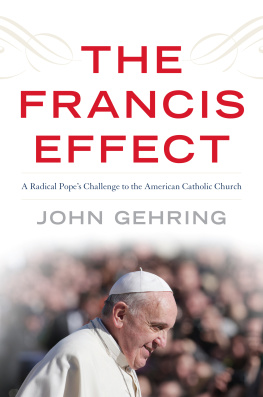
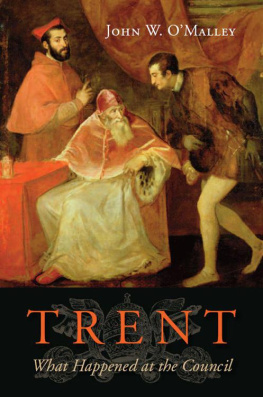
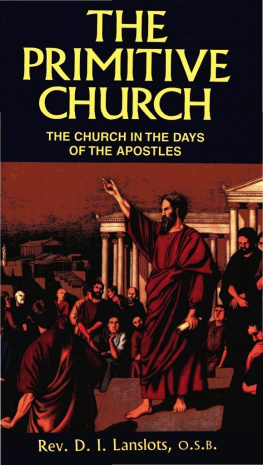
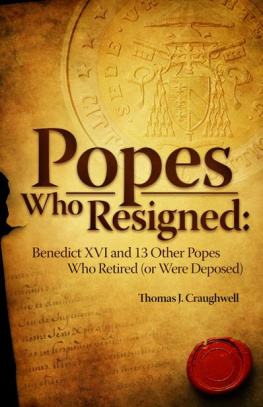
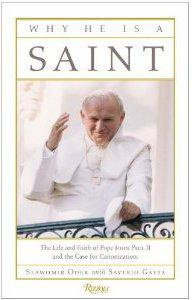

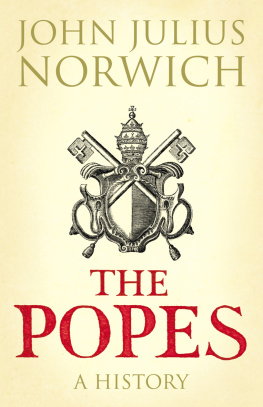
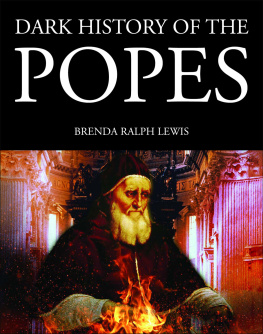
 The paper used in this publication meets the minimum requirements of American National Standard for Information SciencesPermanence of Paper for Printed Library Materials, ANSI/NISO Z39.48-1992.
The paper used in this publication meets the minimum requirements of American National Standard for Information SciencesPermanence of Paper for Printed Library Materials, ANSI/NISO Z39.48-1992.